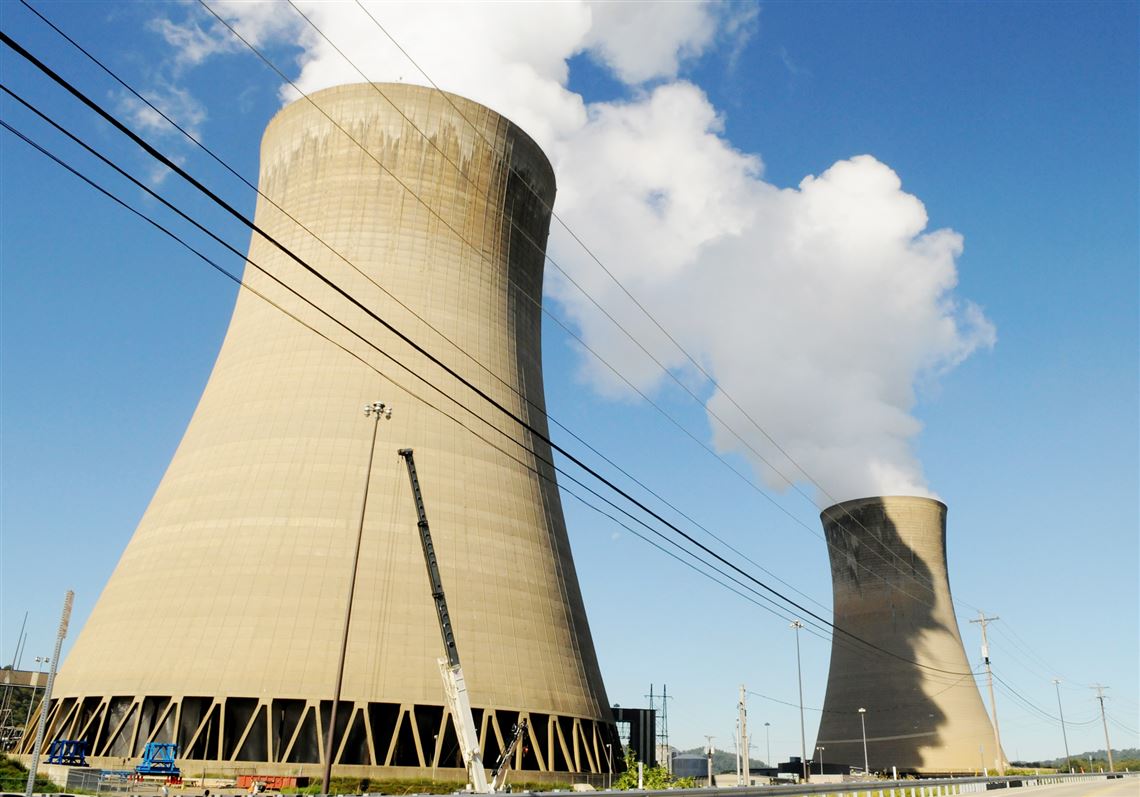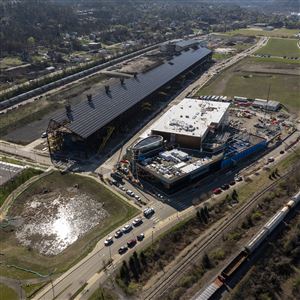OAK HARBOR, Ohio — The Beaver Valley nuclear power plant and the Bruce Mansfield coal-fired power plant in Beaver County are likely approaching the same fate as that awaiting the Davis-Besse nuclear station in Ohio: premature closure, according to a FirstEnergy Corp. executive.
The outlook for FirstEnergy’s coal and nuclear plants in Pennsylvania and Ohio is bleak, chief financial officer James Pearson said Thursday.
While no date has been set for the permanent closure of any of the plants, Mr. Pearson said their days under FirstEnergy ownership are numbered and they are “probably impossible to sell in today’s market,” especially in states that have deregulated electricity markets.
Pennsylvania and Ohio embraced deregulation in 1996, a decade before a global fracking boom resulted in record-low natural gas prices. That, along with growing investments in wind and solar power, made nuclear and coal noncompetitive.
“Those units cannot generate enough cash to cover costs,” Mr. Pearson said of FirstEnergy’s nuclear and coal-fired plants.
Beaver Valley has 800 employees and is licensed to operate until at least 2036. Bruce Mansfield, with 350 employees, is the largest coal station in Pennsylvania and has seen demand for its power go from constant to intermittent. Both are in Shippingport.
A fire at the coal plant earlier this month damaged critical equipment, FirstEnergy disclosed, and two of the plant’s three units have been taken offline.
FirstEnergy is one of several utilities heavily invested in nuclear and coal that lobbied government officials on the state and federal levels for special consideration, claiming those industries have unique attributes.
Most efforts have been defeated, one of the biggest being a Federal Energy Regulatory Commission ruling earlier this month that denied Trump administration efforts to help nuclear and coal-fired power plants.
Now, with an April 2 deadline looming for a $100 million debt principal payment, FirstEnergy has its back against a wall.
With combined debt estimated at $3.5 billion and losses mounting daily, the utility has turned to a combination of hedge funds managed by four private investor groups to help move it forward with a regulated growth strategy.
The groups — New York-based Elliott Management Corp., Dallas-based Bluescape Resources Co., Singapore-based GIC Private Limited (formerly the Government of Singapore Investment Corp.), and New York-based Zimmer Partners LP — have agreed to invest $2.5 billion in FirstEnergy, but only if it cuts ties with its plants deemed noncompetitive.
“They like the strategy of moving to a purely regulated [corporation],” Mr. Pearson said.
Exact details will take months to work out in court, as will details of how and when FirstEnergy Solutions, the subsidiary that owns the coal and nuclear plants, will likely file for bankruptcy protection.
But Mr. Pearson said that whatever happens will almost assuredly mean the end of FirstEnergy Nuclear Operating Co., the division of the corporation in charge of Davis-Besse, Perry, and Beaver Valley, as well as the closure of other coal-fired power plants.
“The longer we go down this path, the deeper we would get into debt,” he said.
Absent any last-minute relief from state or federal officials, FirstEnergy’s board of directors cannot escape massive first-quarter losses through March 31, and will likely go into the April 2 debt payment with a plan to start divesting itself of nuclear and coal.
Davis-Besse is beginning a month-long refueling in early April, one that plant employees reportedly believe will be the last under FirstEnergy ownership.
Mr. Pearson said that belief is “entirely accurate.”
A recent letter to shareholders states the utility’s new business model will be based around a focus on its most competitive assets, which does not include nuclear and coal.
Once refueled, Davis-Besse will have enough power in its reactor to last another two years. Nuclear plants refuel every 18 months to two years, based on the isotope of uranium in their fuel.
The timing of the shutdown will be largely determined by what courts and creditors decide, a process that company executives want done in “an orderly fashion,” Mr. Pearson said.
The inevitability of the decision has been building since the fracking boom began a little more than seven years ago, he said.
First Published: January 26, 2018, 12:05 a.m.
















